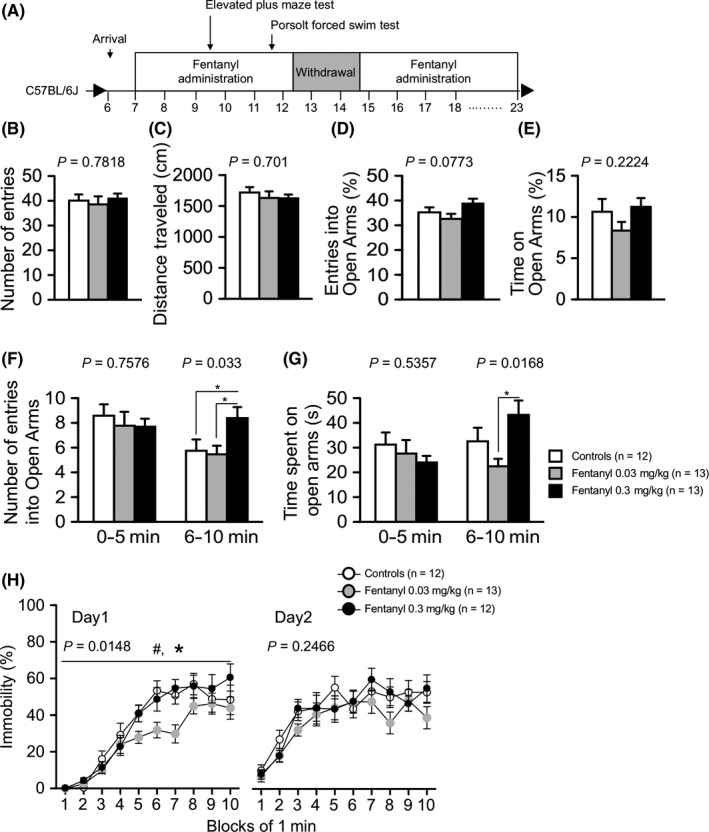Figure 4.

Mice treated with high‐dose fentanyl exhibited reduced anxiety‐like behavior. Mice were tested in the elevated plus maze test and Porsolt forced swim test treatment period 1 (A). The elevated plus maze test: number of arm entries (B), distance traveled (C), percentage of entries into open arms (D), and percentage of time on open arms (E) are shown. In the whole period, there was no significant difference among the three groups (B‐E). In the first and last half of the test, mice treated with high‐dose fentanyl had a significantly greater number of entries into the open arms (F) and spent more time on the open arms (G) than control mice. Porsolt forced swim test: The percentage of time spent immobile on days 1 and 2 was recorded (H). Mice in the low‐dose fentanyl group had a significantly lower immobility ratio than the other groups on day 1. Data are presented as means ± SEM for the indicated numbers of animals. The P values indicate a treatment effect in one‐way ANOVA or two‐way repeated measures ANOVA. In the elevated plus maze test, the asterisk indicates a nominally significant difference for comparisons between treatment groups (P < 0.05). (F‐G). In the Porsolt forced swim test, the asterisk and number sign indicate a nominally significant difference between the high‐dose group and low‐dose group and between the low‐dose group and control group (P < 0.05)
